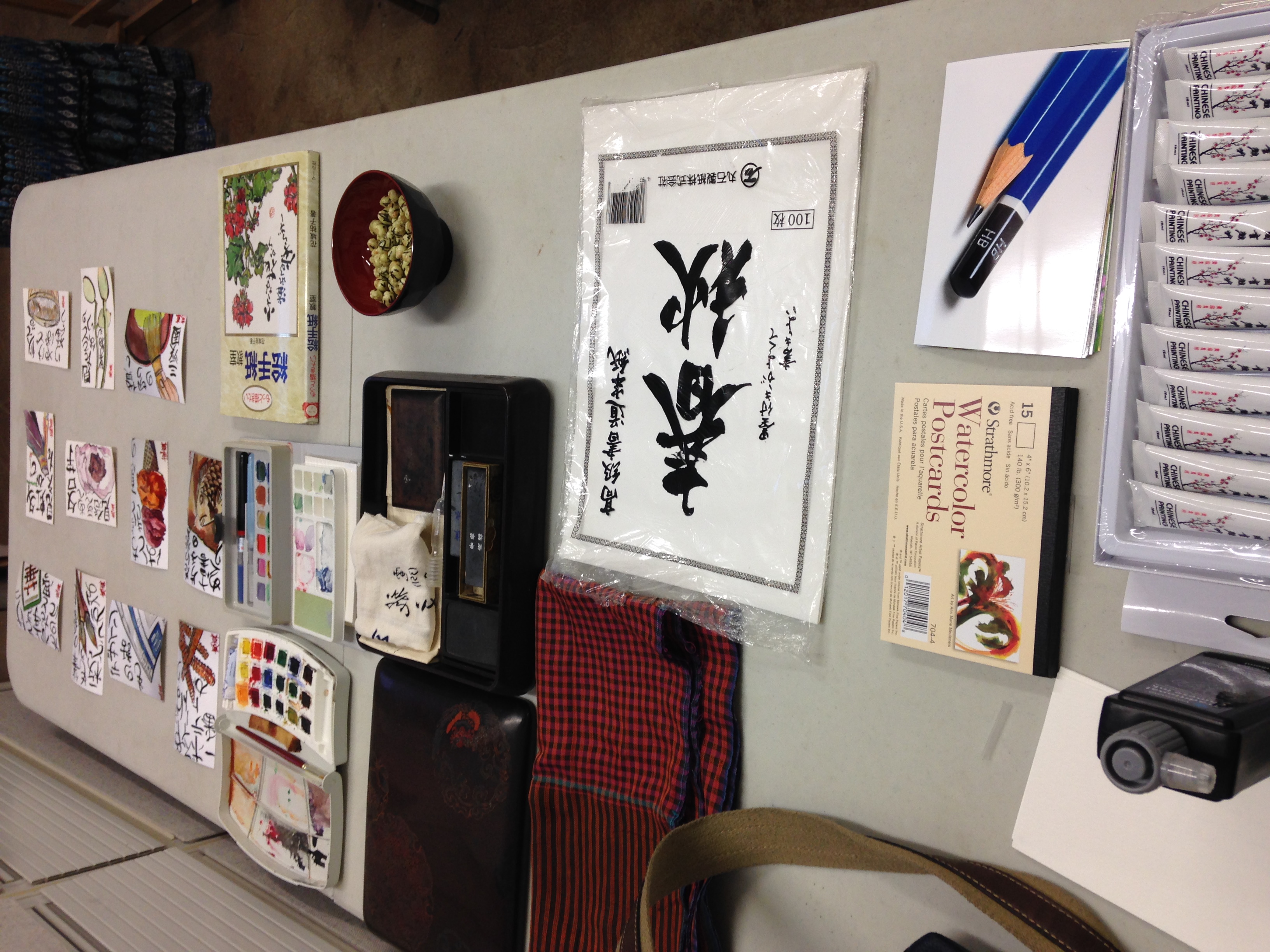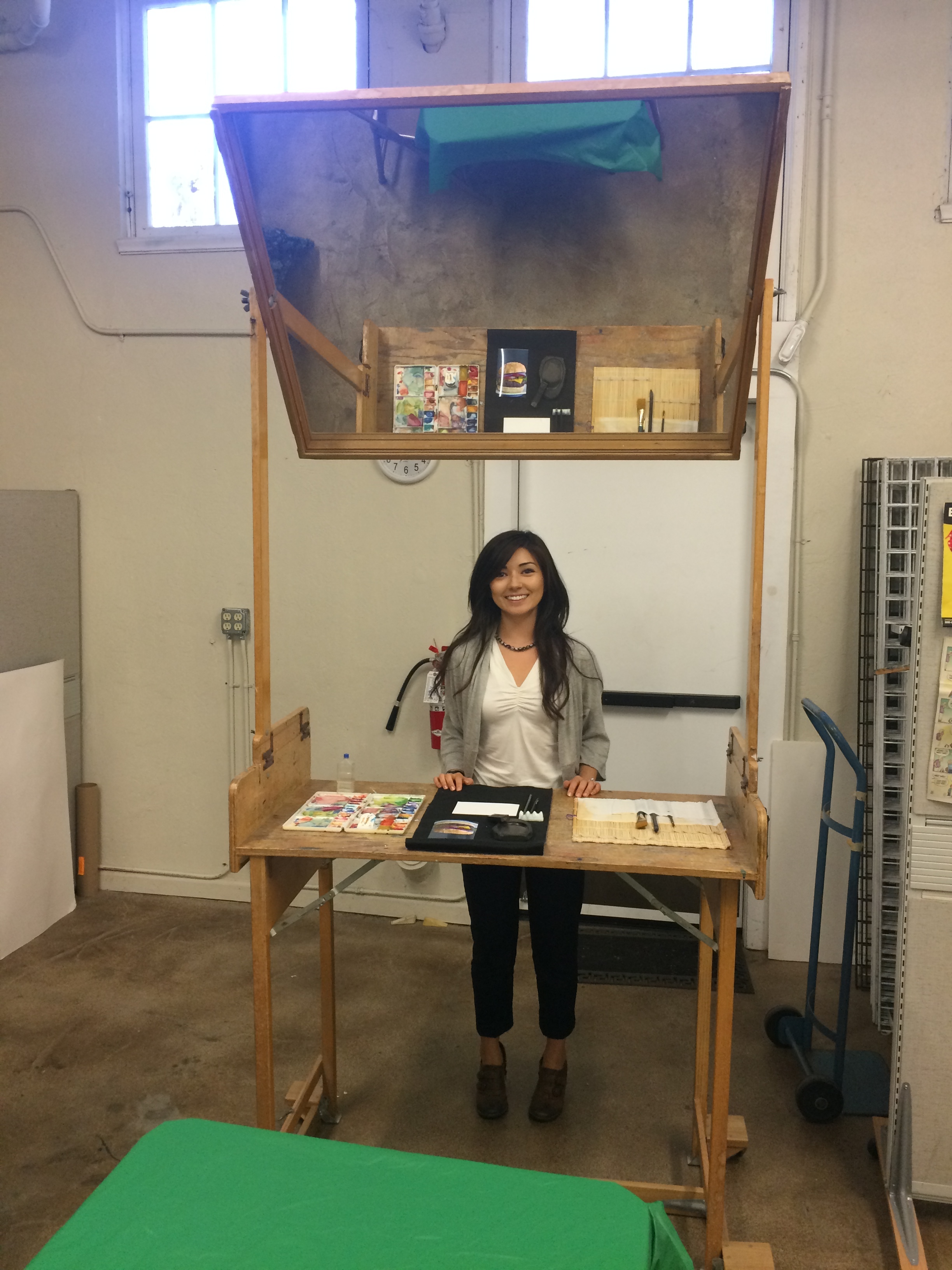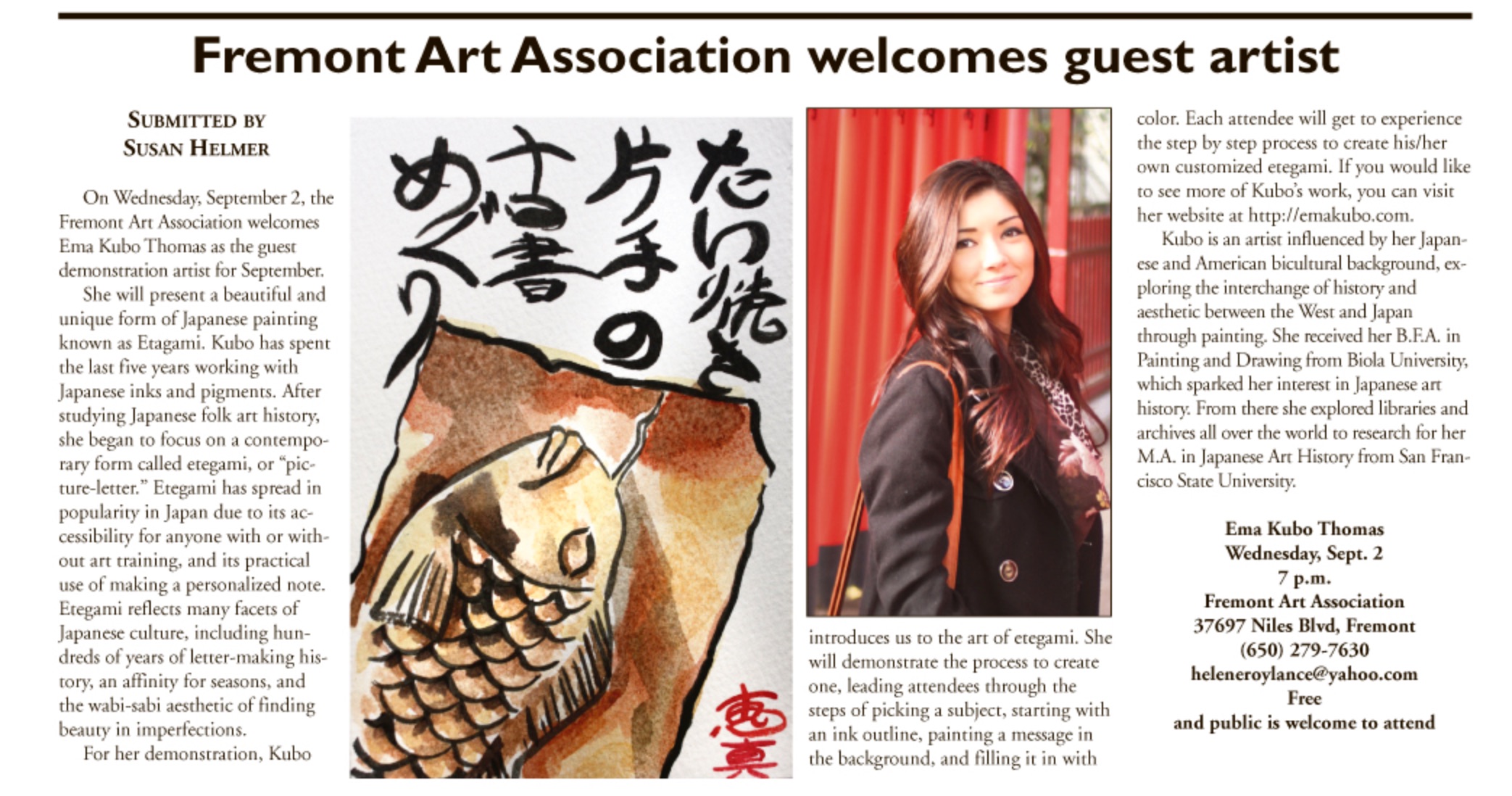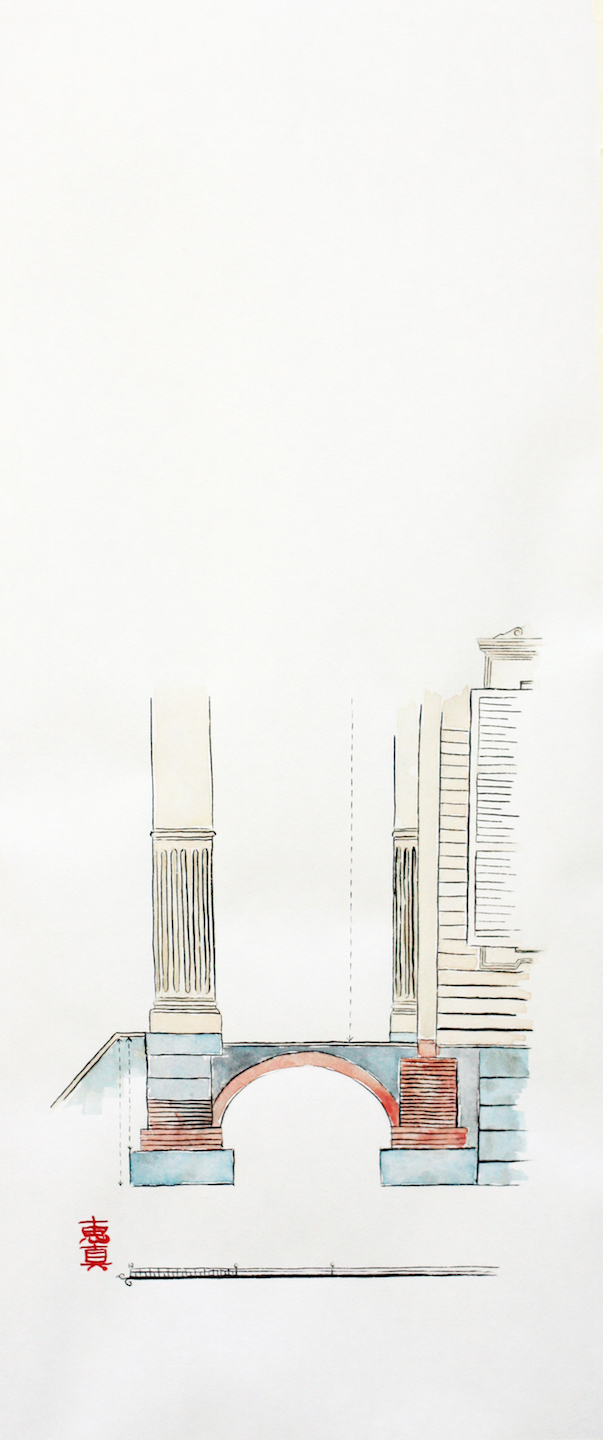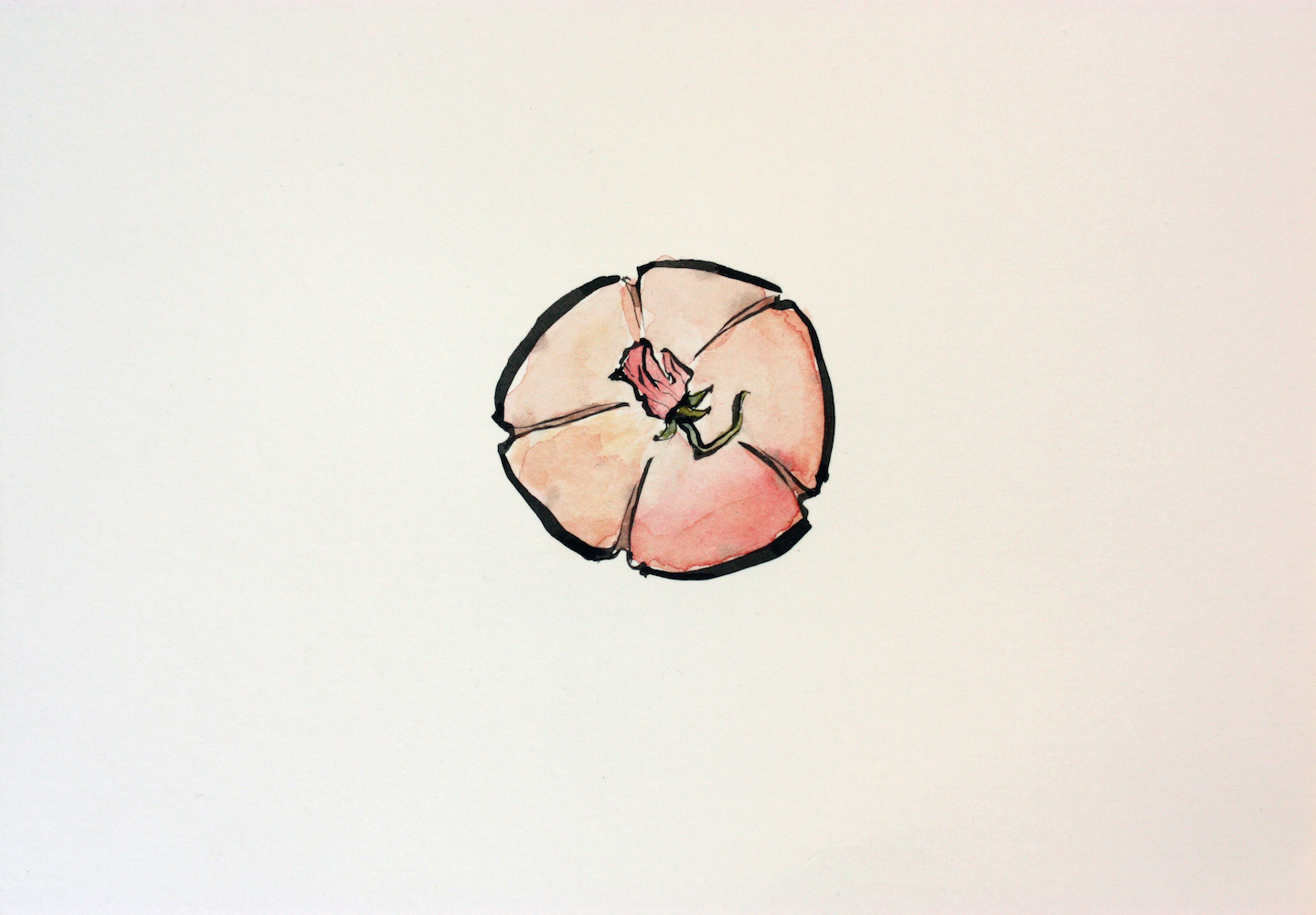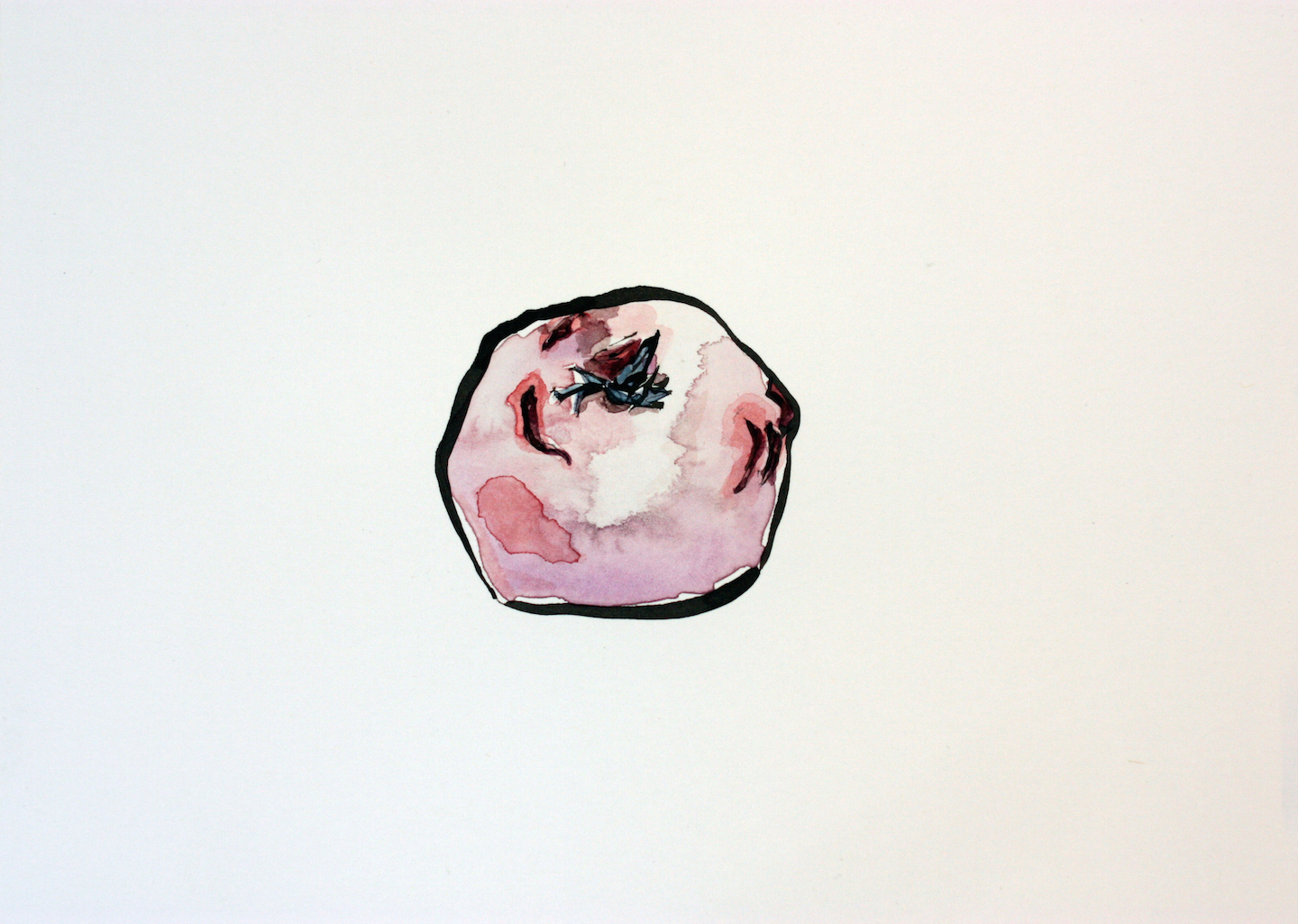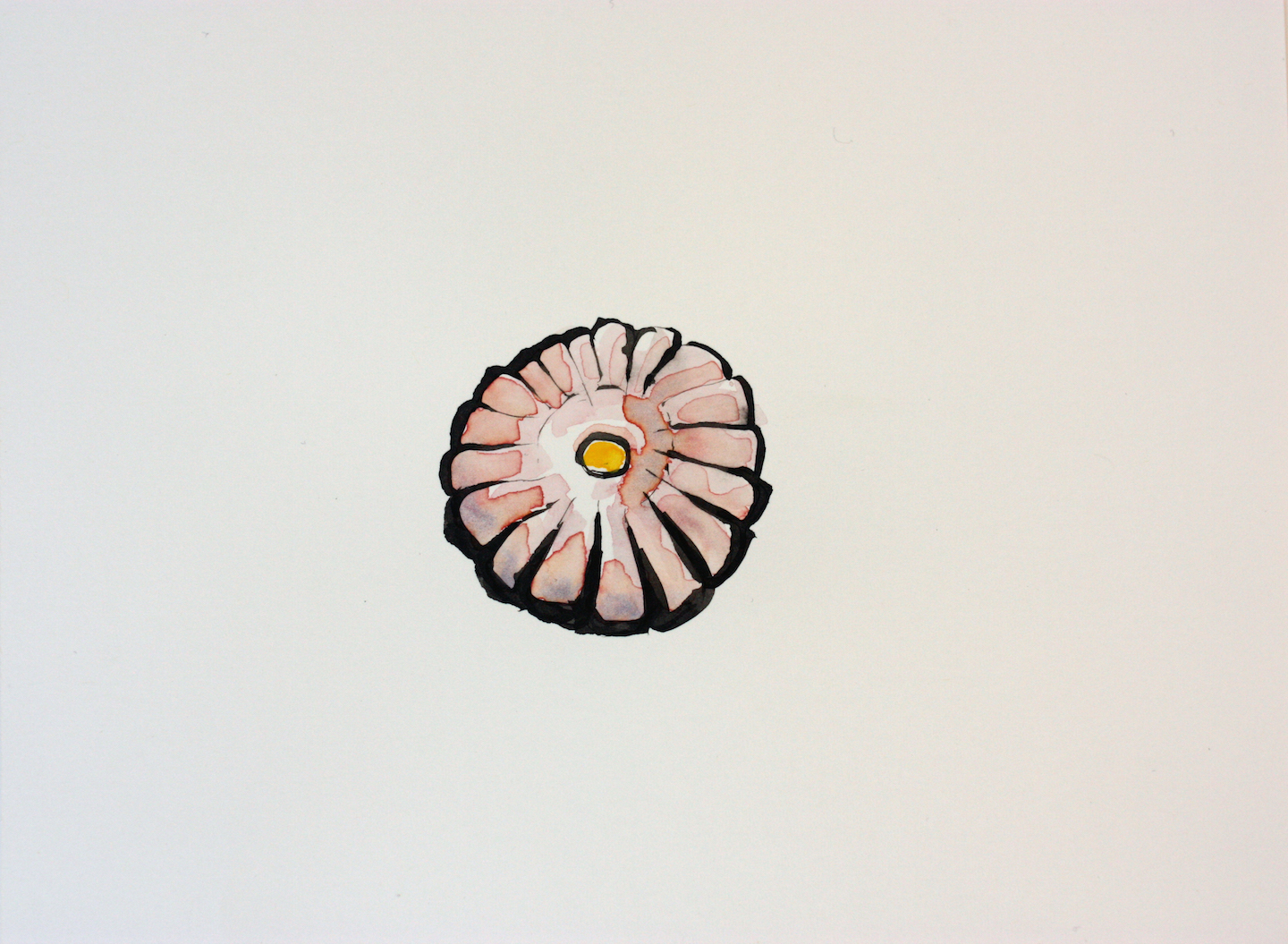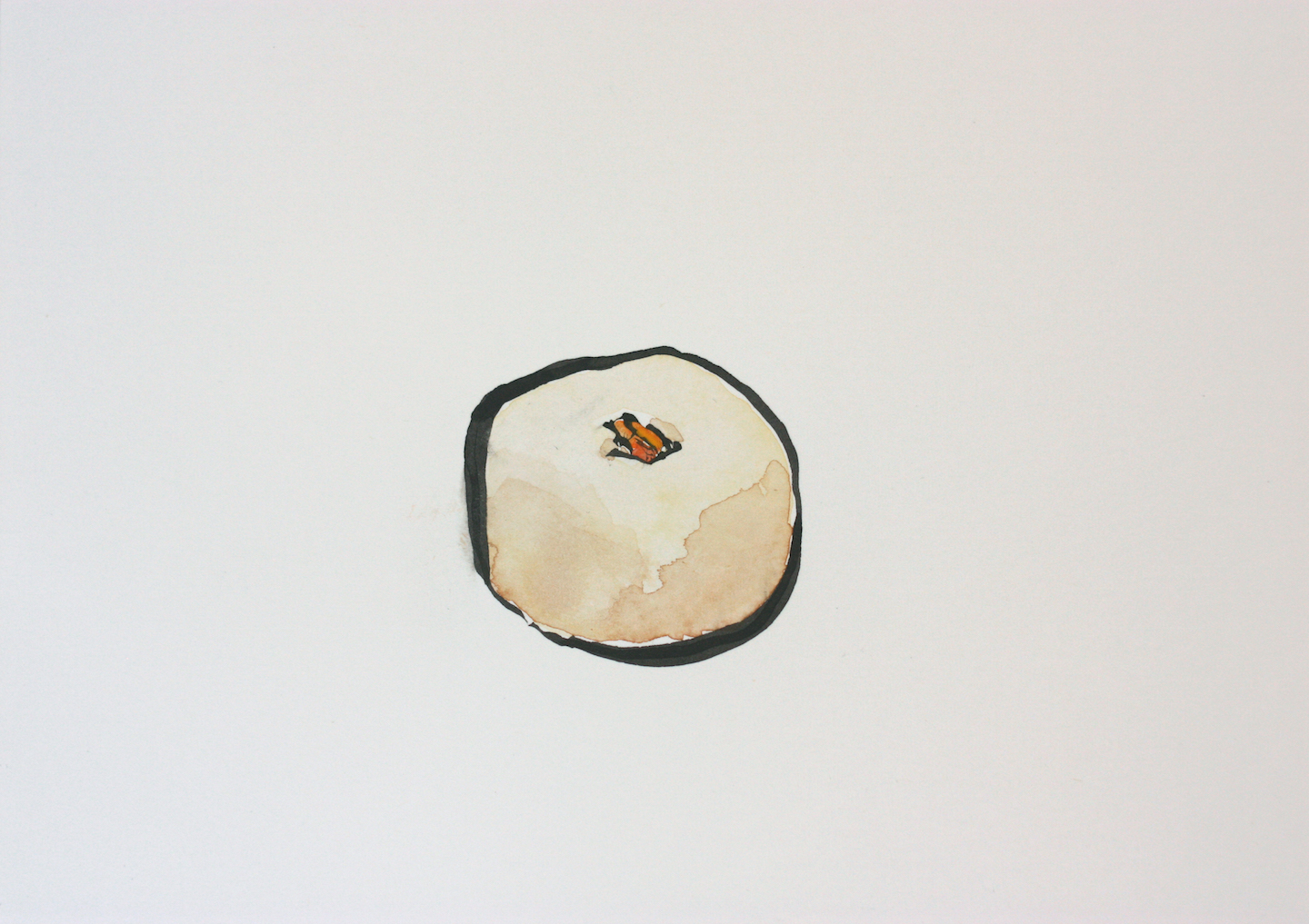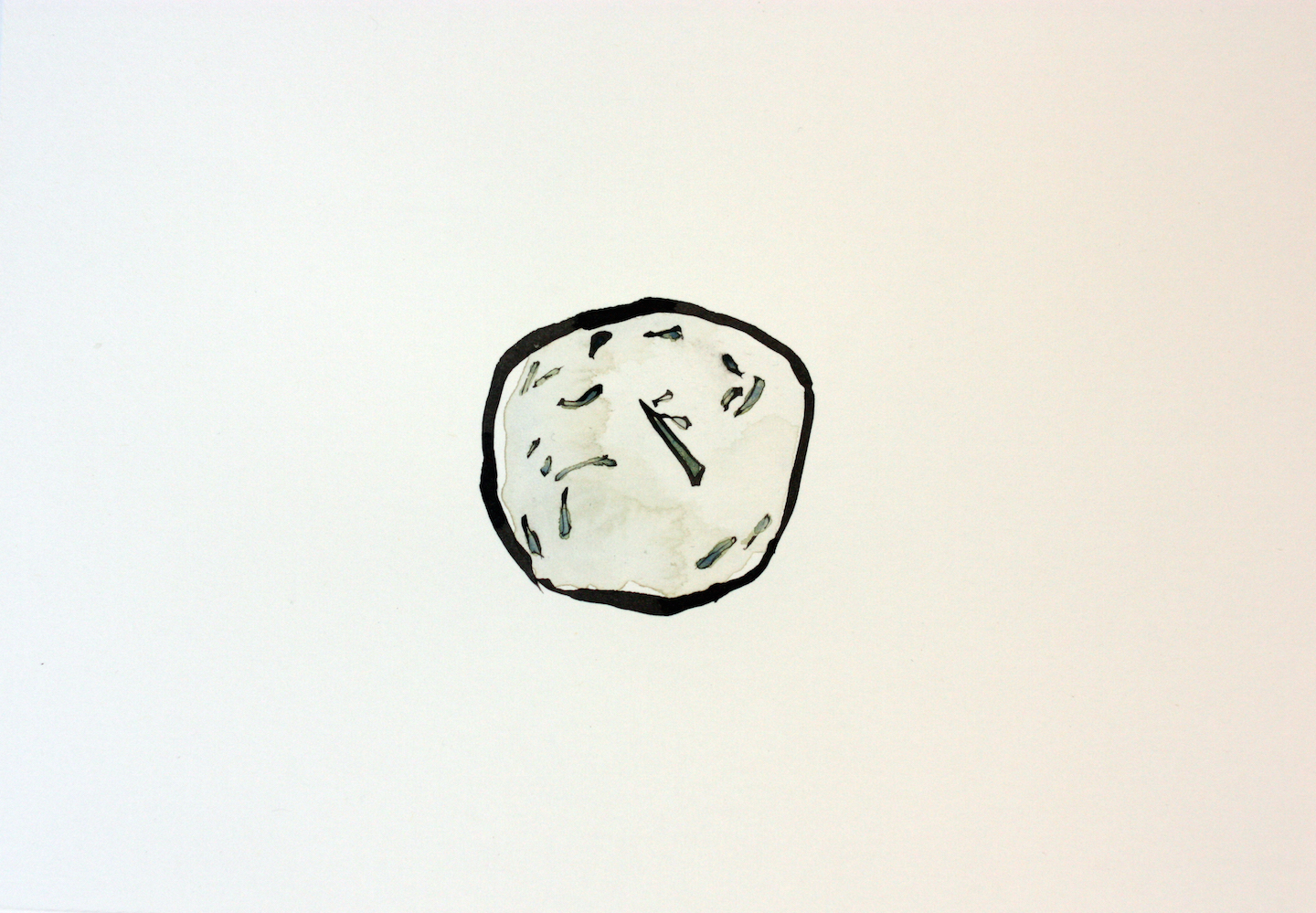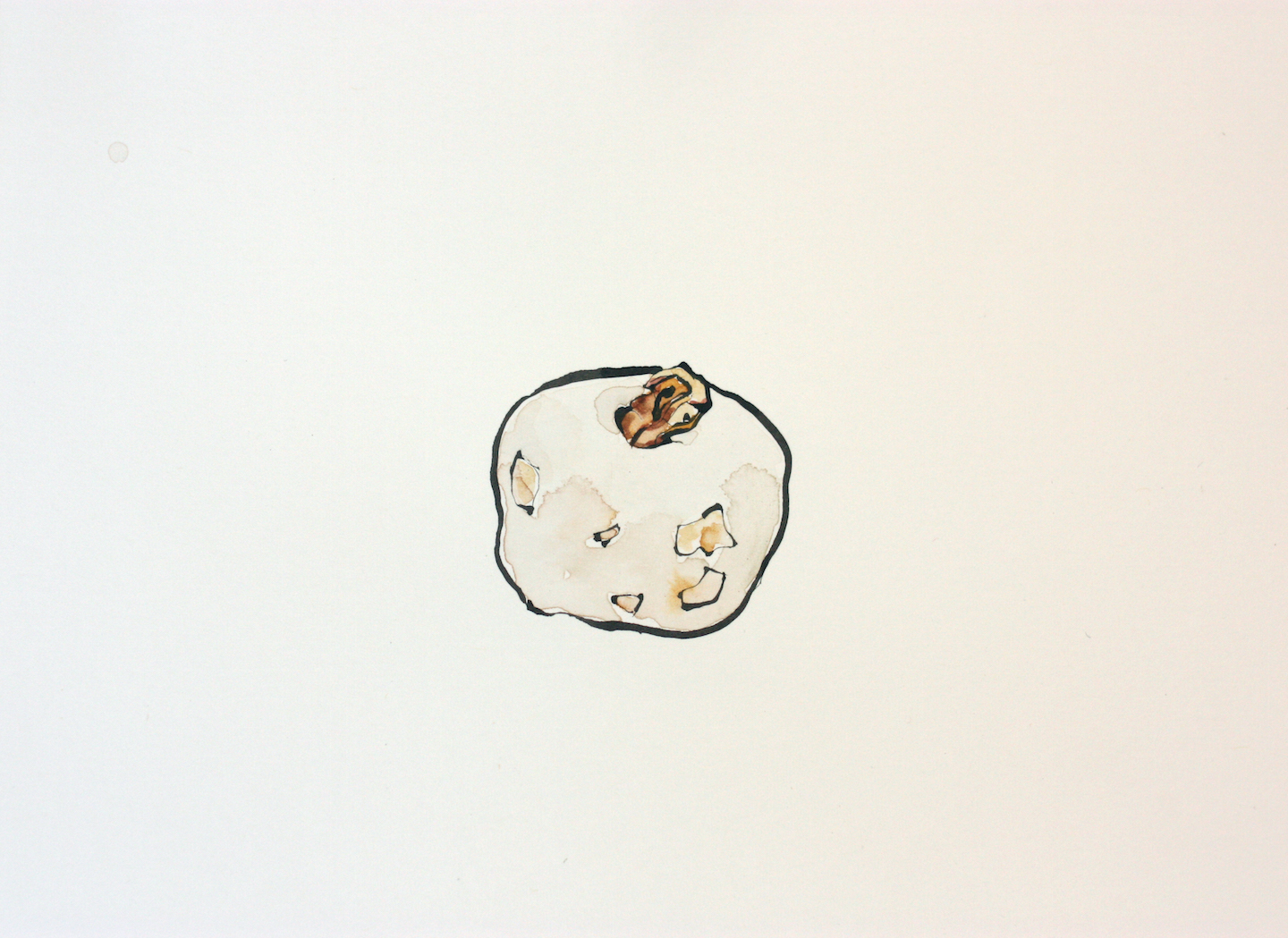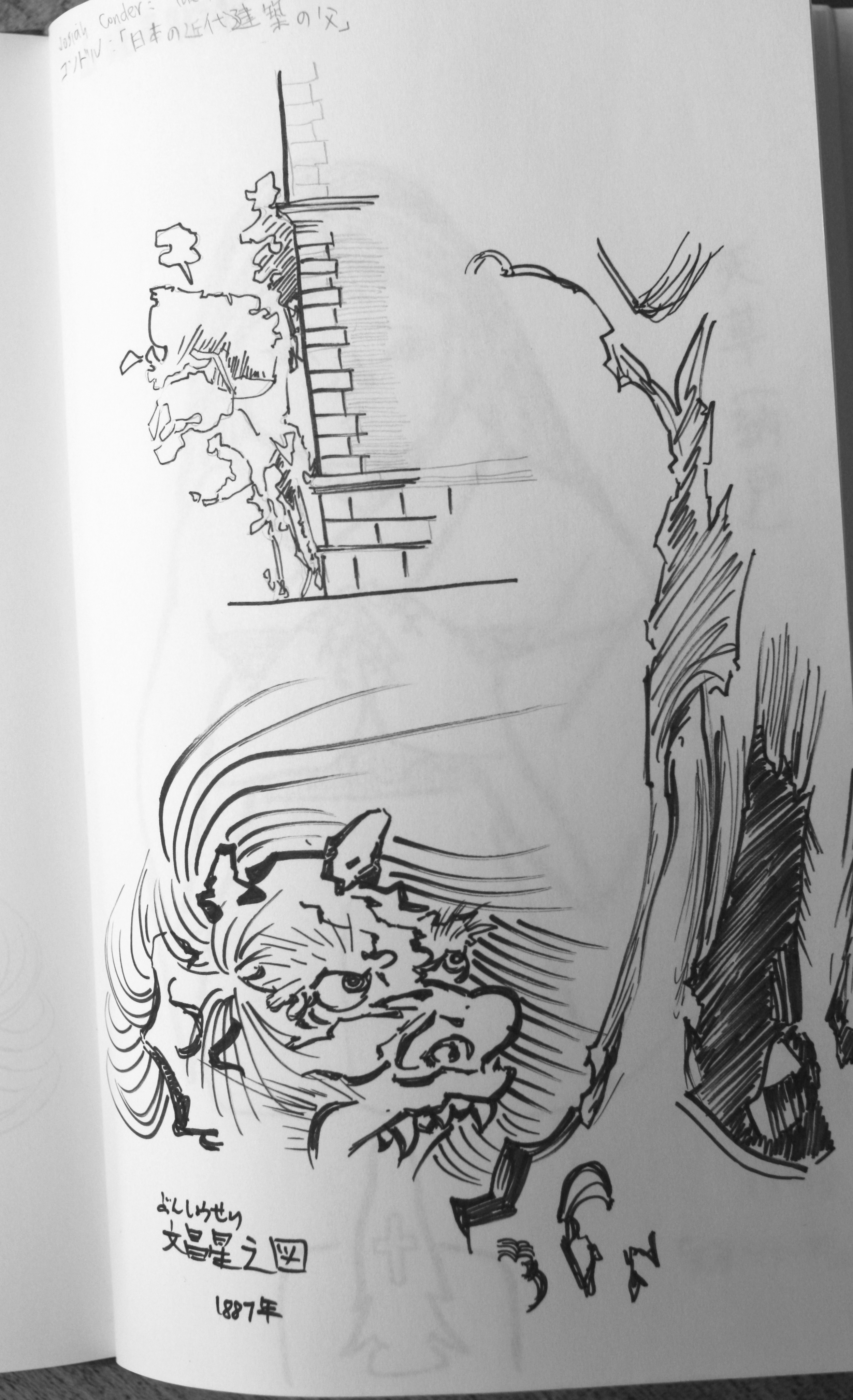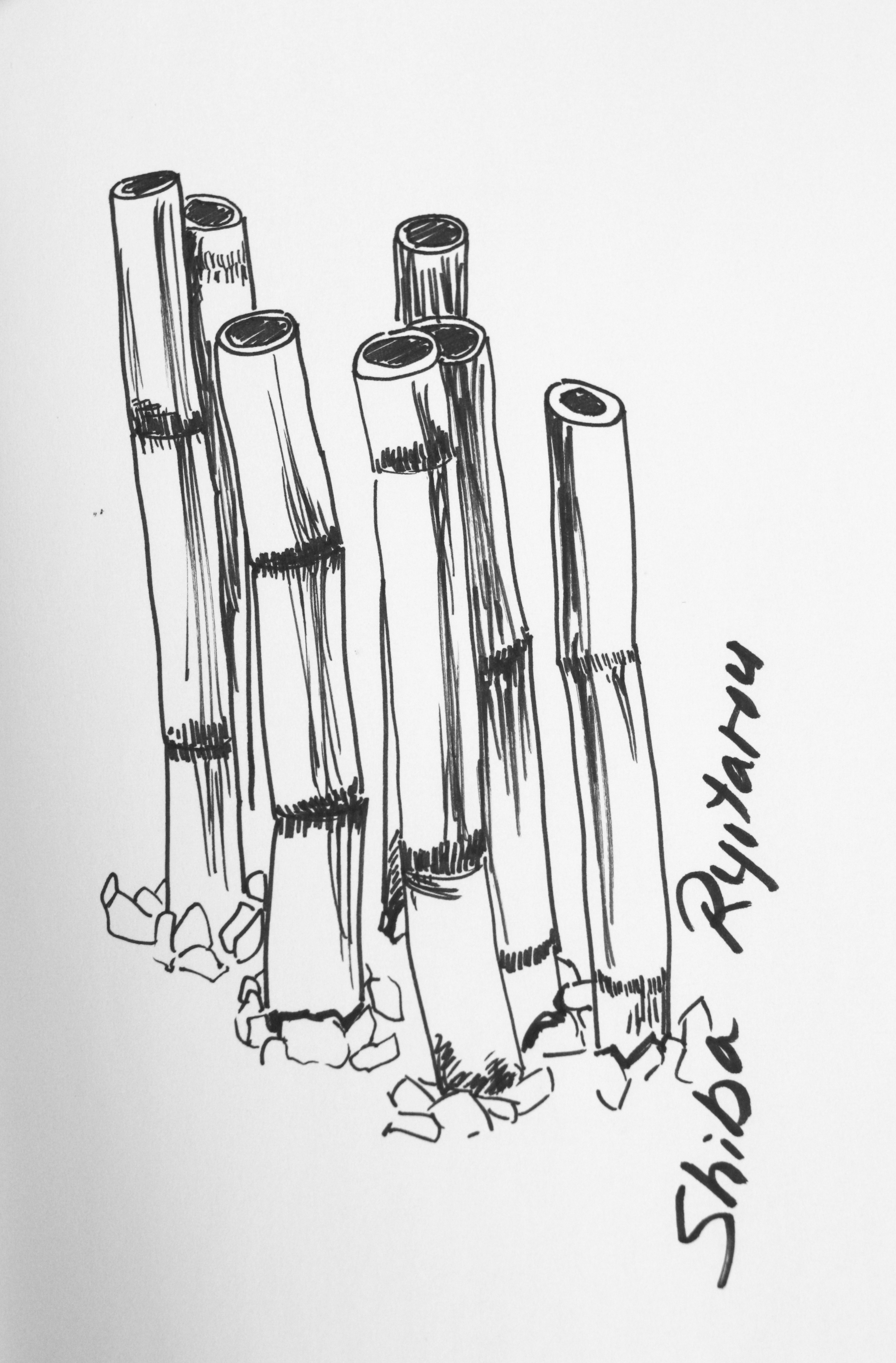Telling stories with my brush at 310 Gallery in Oakland: There are no rough drafts or under drawings in the tradition of etegami, or Japanese “painting letters.” Etegami are direct, thoughtful, personal letters intended to share. The shift in perspective when thinking of the recipient rather than the perfect line calls for a change in style—coming to terms with the imperfect human touch.
Read MoreStollen Bread? {12 Days of Christmas Traditions Explained Quickly}
Why do we eat Stollen at Christmas? All I can say is tradition...because my mom makes it every year...? There must be some background.
First, what is Stollen? Stollen, or Christstollen, is a German formed bread-like fruit cake. It's filled with dried fruits, nuts, and spices covered in powdered sugar.
Now time travel six centuries ago to Europe! Stollen started (or was recorded) as far back as 14th century Germany. The shape of Stollen-- this fold-over dough with a white top layer-- is symbolic of baby Jesus wrapped in swaddling cloths. It started as a fasting cake made during Advent when people couldn't use butter, milk, or fruits (due to fasting rules) so it started as a very plain bread. After special appeal to the papacy in the 15th century, butter and milk were added, and the cake started looking more like it does today. Winter merriment started in Germany around the Winter Solstice before Christianity spread there, and the ingredients like rare spices and fruits were a treat for these special festivities, naturally also used in Christstollen.
"A must for breakfast."
All I knew of Stollen was that it was from Germany and my mom made a healthier version for my dad every year. She's an amazing baker, making more breads than I knew existed. She makes Japanese breads, Chinese special starter breads, naturally fermented starters for rustic breads, brick oven-baked bread... I could fill a book describing them all. When I attempt yeasted breads I anxiously stare at my yeast dissolving, hoping it will activate and bubble instead of get scorched-- meanwhile my master baker mom makes her starter from scratch without any granulated shortcuts. There's no comparison to the flavor and texture of her bread- no matter what I bake it's mediocre because I've gotten used to hers.
The etegami Christmas series wouldn't be complete without Christmas bread because our Christmas day wouldn't be the same without the sweet feast.
This year I attempted baking 3 of the 10+ breads: 2 yeasted: Polish Poppyseed Walnut Bread, Swedish Marzipan Filled Coffee Bread, & 1 quick bread: Cranberry Orange Bread. I still have a long way to go but I hope to carry on the tradition.
Christmas Cookies? {12 Days of Christmas Traditions Explained Quickly}
Christmas cookies tradition started from holiday biscuits in Medieval Europe. They included spices and dried nuts, like many of our Christmas cookies today. Apparently there were strict baking laws (presumably for safety reasons) but the holidays were an exception.
Some say that giving cookies to Santa started around the Great Depression to teach kids generosity. I know someone who was taught all along that Santa actually doesn't like cookies, he likes pizza and beer, so he grew up leaving pizza and beer out for Santa on Christmas Eve. Clever!
We haven't decided about Santa and kids but I wonder what the Santa who comes to our home would prefer... maybe brownies. Edge pieces only-- extra special gifts for corner pieces.
When did St. Nick move to the North Pole? {12 Days of Christmas}
The background of St. Nick is somewhat known- the monk St. Nicholas born in 280AD was known for giving away his inherited wealth and helping many people. St. Nicholas day was celebrated December 6th, when people feasted and gave gifts. Stories about St. Nicholas giving gifts continued on for centuries.
The name? A quick overview:
- Saint Nicholas
- Sint Nikolaas (Dutch)
- Sinter Klaas (shortened, Dutch)
- Santa Claus
Now the main question: when did he move to the North Pole?
In 1890, political cartoonist Thomas Nast drew what is now our image of Santa Claus in the North Pole. He was positioned there most likely because the arctic was seen as a mysterious fantasy land that no one had been to (yet), plus Christmas was associated with snow. So this mysterious, jolly, kind gift giver came from the land of the arctic, the North Pole.
It says: "Oh look, there's Santa."
[another bubble burster: apparently there are no penguins in the North Pole...]
Poinsettia? {12 Days of Christmas Traditions Explained Quickly : Day 5}
First of all, the pronunciation: poinsett-ee-a? poinsett-a?
I wish they were around more than at Christmas since they're one of the few flowers I can keep alive! And to find out they are barely flowers... (the flowers are the tiny little yellow buds). I'm bursting my own bubble of festivity.
DAY 5: POINSETTIA.
We're back to the Aztecs in modern-day Mexico where the plants originated (see post here about hot chocolate from Mexico). They grew in the wild in the winter and were used in important ceremonies. Fast forward to 16th century Mexico, when a little girl wanted to celebrate Jesus' birthday by taking him a gift but had nothing. An angel told her to take weeds which then turned into beautiful poinsettias at the church altar. The church continued to use poinsettias at Christmas, and they are now associated with the holiday because of the season they grow and because of this legend.
The name Poinsettia is from the American ambassador, Poinsett, who brought them back from Mexico to his greenhouse in South Carolina in the 1800s.
Now back to pronunciation...
Poin-set-ya.
But that's a little hard to pronounce so some regions developed into poinsett-ee-uh, and some to poin-set-uh. I can't ignore the i so I'm going to stick with poinsett-ee-uh.
Nutcracker? {12 Days of Christmas Traditions Explained Quickly : Day 4}
As strange as it sounds and for no good reason, those funny little nutcrackers are my favorite Christmas decorations. Yet I have no idea where they came from or why they are around only at Christmas. If it's trendy to have a gold rhino on your stack of books as a paper weight, why can't it be a nutcracker?
"I wonder if it really cracks?"
Day 4: NUTCRACKER.
How did nut-cracking pliers become a home decoration? The history goes back (at least) 300 years to a woodworking town in Germany. Dolls were given for good luck, and the same woodworkers made soldier dolls as well as nut-cracking tools, so the two were combined into one as a practical gift for good luck. The connection with Christmas may come from eating around this time since nuts are harvested in the fall and keep well.
Especially after Tchaikovsky's ballet, The Nutcracker Suite, premiered in St. Petersburg in 1892 the little figurines grew in popularity. They became common in America only since the 1950s after soldiers in WWII brought them back from Christmas fairs in Germany (which I would LOVE to go to someday).
My favorite random fact that I've gathered from reading about nutcrackers is "Nutcrack Night" also known as Halloween. In Scottish and Northern English tradition, October 31 was the night to sit around a fire and crack freshly harvested hazelnuts and chestnuts. Maybe our nutcrackers should come out on Nutcrack Night and stay through Christmas!
Wreaths? {12 Days of Christmas Traditions Explained Quickly : Day 3}
Why have I been making wreaths from Christmas tree branches the past two Christmas seasons? Why did we hang one on our door growing up? Tradition, I suppose...
DAY 3: WREATHS.
Christmas wreaths can be traced back to Ancient Greeks and Persians, who wore them as a symbol of status or victory. They may have been hung in the home or on the door as souvenirs. Wreaths were also hung on doors as symbols of the home to distinguish one home from another.
The specific use of evergreens most likely stems from celebrating Winter Solstice. Evergreens were chosen since they stay green year-round; a symbol of life overcoming- again, a victory.
In the Christian tradition the circular shape represents eternal life- perhaps using evergreens as a symbol of victory over death.
Which reminded me of:
"Death is swallowed up in victory. Oh death, where is your victory? Oh death, where is your sting?...but thanks be to God who gave us victory through our Lord Jesus Christ. Therefore, my beloved brothers, be steadfast, immovable, always abounding in the work of the Lord, knowing that in the Lord your labor is not in vain." (1 Cor. 15:55-57)
Wreaths are a much more powerful symbol than I had expected... it gives me more motivation to form those branches sitting on the balcony into a symbol to remember Christ's victory over death.
Mexican Hot Chocolate? {12 Days of Christmas Traditions Explained Quickly : Day 2}
Mexican Hot Chocolate? No, it's not a twist on hot chocolate. It's the other way around! The modern sugary-chocolatey-milky indulgence is a distant adaption of the original.
DAY 2: MEXICAN HOT CHOCOLATE.
Let's time travel back 2500 years to the Maya. They made a bitter chocolate drink made of ground cocoa seeds, water, chiles, and other spices. When the Spaniards came in the 16th century, it was still this bitter and spicy cocoa drink taken for its health benefits.
After it was introduced in Europe, sugar was eventually added in the 17th century. It was an expensive drink since all ingredients were imported. Later in the same century, a British gentleman added milk. Of course.
It wasn't until the 19th century that the Dutch processed the beans into cocoa powder (and eventually to bar chocolate, hallelujah). I always buy "dutch process" cocoa powder because of the wonderful, smooth flavor but never thought about the name. The Dutch were the first to separate cocoa butter and cacao seeds, and the name stuck.
Fast forward a couple centuries:
Have you tried hot chocolate in Italy or Spain? I was shocked the first time I tried "hot chocolate" in Italy, after growing up with American instant powdered hot chocolate. The best way to describe it is an espresso cup of rich chocolate pudding. In Spain it's also a rich chocolate pudding (plus churros for dunking).
My cooking, traveling, and painting worlds collide- my favorite moments!
心もあたたまる:"Also warms your heart"
I suppose my Christmas drink, my "Mexican hot chocolate" (a concoction of almond milk + dutch process cocoa powder + cinnamon stick) has little to do with the original form, but I'll keep stirring my cinnamon stick now as an ode to times long ago.
Now with this wealth of hot cocoa knowledge, continue on with this merry December and enjoy the health benefits of good cocoa.
I meant my "hallelujah" very literally:
And also that every man should eat and drink, and enjoy the good of all his labour, it IS the gift of God. (Ecclesiastes 3:13)
Mistletoe? {12 Days of Christmas Traditions Explained Quickly : Day 1}
We don't do a lot of Christmas decorating but we still have some basics including mistletoe, poinsettia, Christmas tree, branches for a wreath, nutcrackers... but if you ask me why? My best answer is: "It's festive (*add a big smile*)." So, here's my 12-day exploration featuring etegami to look at where these traditions came from!
Day 1: Mistletoe.
Why kiss under a mistletoe? Why not a holly?
First, what is mistletoe: The name originated as "mistel"+"tan"= dung + stick
It's a parasite that is spread through bird poop. How romantic.
Now a brief overview of the tradition: It symbolized love and friendship in European folklore, then in the Middle Ages was hung in homes for good luck and protection against evil spirits.
Kissing under it began in England, since mistletoe was attached to "Kissing Boughs"(basically a spherical version of a wreath) around wintertime .
From England, the tradition migrated with people to America. Then fast forward hundreds of years, I'm giddy this year to discover preserved mistletoe at Trader Joe's! My first mistletoe!
Hang your mistletoe, erase "dung stick" from your mind, and enjoy the tradition of love and friendship.
26/50 : Unitasking this Holiday Season
Happy belated Thanksgiving! Now that my stomach is full of several meals of turkey... I can sit down and write.
How can we uni-task in the busiest time of year? I'll start with what I know.
I like to multi-task because I feel productive and then proud of that productivity. My mind says, "Look how much you accomplished, self!" I rely on myself and feed my pride. However, I do know that I can't multi-task that effectively. One of the two or three things isn't done well.
If I blow dry my hair and fill in my eyebrows at the same time, I either have caterpillars on my forehead or frizzy and tangled hair. Both accomplished, maybe saved 5 minutes, but neither were done well and probably more energy spent than necessary.
A friend from Japan stayed with us for about 9 days and she taught me how to do one thing at a time, and what that communicates to another person. When you stop, sit, and talk, it shows that you care, you are listening, that they are worth your time. Of course this isn't always possible, but in my case I'm the one that gets in the way more than external interruptions. The dishes don't HAVE to be done now. That spill doesn't HAVE to be cleaned now. Instagram doesn't NEED me to check it.
It's really hard to undo multi-tasking. At times it can be fine, sometimes necessary. But not always. People are more important than tasks. I tend to forget this when I'm on a mission, but in the busiest time of year, I want to try to uni-task when it comes to people. My friend is teaching me, just by being with her, that one's presence and stillness speaks volumes about caring for and valuing someone.
Be devoted to one another in brotherly love; give preference to one another in honor. (Romans 12:10)
So, while I feast on Thanksgiving leftovers and look forward to more holiday festivities, I hope to get better at unitasking. How to do it? Some tips that help me:
- Spend time with someone who is good at it. Get antsy and uncomfortable through it.
- Leave your phone in a different room (with the volume up if needed for emergencies).
- Practice yoga for a few minutes a day. It teaches "mindfulness" in details of each task.
- Rest your hands and turn your body towards whoever you are talking to.
- Pray: for patience and trust to rely on God to accomplish what needs to be done.
Some additional reading: 12 Reasons to Stop Multitasking according to Huffington Post.
Happy unitasking!
25/50 : What to do with"28 Thousand Days"
Our days are numbered. Alicia Keys reminded me the other day--"28 Thousand Days"? Maybe. Maybe not. Often not.
Some changes at work make me more grateful for and mindful of the people I see daily. It's not guaranteed to continue.
I painted this stack of pants for my boss as a goodbye and thank you gift to him- he reminded us of the right perspective, that we are after all "just selling pants."(written in Japanese in the painting since my job is exactly this translation process)
"Just Selling Pants"
Psalm 39:4-7
Show me, Lord, my life's end and the number of my days; let me know how fleeting my life is.
You have made my days a mere handbreadth; the span of my years is as nothing before you.
Everyone is but a breath, even those who seem secure.
Surely everyone goes around like a mere phantom; in vain they rush about, heaping up wealth without knowing whose it will finally be.
But now, Lord, what do I look for?
My hope is in you.
By hoping and trusting in God, who is eternal, it puts my petty daily troubles (which wouldn't even make a visible dot on a timeline of eternity) into perspective. They will pass, but how I respond and treat people in the meantime- those things last longer. While my boss (who is on to other adventures) was incredible at his job, his love for people and care for coworkers as family set him apart and impacted everyone.
"Let all that you do be done in love."
1 Corinthians 16:14
ALL? Yup. God can work miracles even in a hard heart like mine, so he can make the impossible a reality.
21/50 : Careful what you Google! [Lessons from a new job, part 2]
I was working on a quick one-line translation at work. I looked up a name for a shade of pink in Japanese to see if it was a transliterated color name (like "pee-chi" for peach, etc) or a Japanese word. No photos came up, just text. That should've been clue number 1, but I wasn't aware that apparently Google doesn't show photos for graphic content. The summaries I skimmed in the first 5 hits that came up were unexpected! There I was, week 1 at work, already looking up...what? Porn. Noted, I am definitely NOT using this word in Japanese!
Lesson 1: Careful what you Google.
For my sanity, I must stop comparing this work commute to my previous Tokyo commute. Where could I begin? Why do people on the platform stand directly in front of the doors and block passengers getting off the trains? Why is there enough space to do yoga in the aisles between the seats while people are packed like sardines in the space between the doors on each train? Why is the escalator line far down the platform blocking traffic while the stairs are empty? Why are both sides of the escalator standing sides during rush hour? I suppose these questions answers my last question: Why is the train late 90% of the time?
As scary as it was to face a herd of morning commuting robots in Tokyo, I appreciated the unspoken systematic approach once I got the hang of it and became one of the robots.
Lesson 2: I've a feeling we're not in Tokyo anymore.
This etegami ("letter painting") below was for work also, included in a thank-you note. We talked about going to Humphry Slocombe for an ice cream break after a busy week so that part of the conversation went into the painting.
This weekend I realized (again) that my hopes and prayers are small. But time and time again I'm shown that the "impossible" is possible, and I should hope for great things. I should expect God to work miracles. I'm a pessimist. So, I need extra time spent focusing on the truth, like:
God's voice thunders in marvelous ways, He does great things beyond our understanding. [Job 37:5]
and my favorite that I forget too often:
"Now to him who is able to do far more abundantly beyond all that we ask or think, according to the power at work within us, to him be the glory..." [Ephesians 3:20]
It's "risky" for a pessimistic-planner-type to expect great things and pray for miracles but here we go! Maybe changing this "pessimistic-planner-type" description of myself will be miracle #1.
20/50 : A Burger for Labor Day!
Happy Labor Day in an etegami!
Below is what I painted during the art demo on Wednesday at the Fremont Art Association. Etegami ("painting letters") are usually seasonally themed, so I thought about what holidays are coming up and Labor Day was perfect! What's associated with Labor Day? Grilled burgers of course.
「休みの時はハンバーガー」:"When you're off, have a burger" (roughly translated)
Before the demo I was nervous: my first week of work overlapping with my first art demo/class... the 9-5 job wasn't on the radar when I first agreed to the demo date. Then as usual, some completely unnecessary pessimistic thoughts crept up:
- What if only 3 people show up (my husband Page, the coordinator, me)?
- What if I can't explain clearly?
- What if they aren't interested?
- What if they are disappointed?
- What if my demo painting turns out terrible?
While I couldn't do much to solve most besides pray for supernatural peace, I could at least cross off one by preparing and organizing to provide maximum clarity for participants. If they see me paint, hear me explain, read my handout, and paint their own etegami, that's at least 4 avenues of input! So I spent hours on Sunday planning and making a handout, taking my time since it was also an opportunity to brush up on Adobe InDesign [by no means a one-day feat].
To be honest, after my quick demo my perfectionist side was horrified to see my juicy burger (painting) seep into the bottom bun! BUT it was fun. People were excited and engaged, even inspired to buy the materials to do it at home or incorporate techniques into there own art practice. The enthusiasm of the 25 or so participants gave me a second wind of energy and my anxiety was gone.
I don't want it to sound like magic. The public speaking/teaching I signed up for over and over during grad school to conquer my fear of public speaking really helped. I learned how to organize, simplify, and explain slowly from practice. Opportunities don't just fall in place, but it looks like a pattern of God rewarding the work you put in. I firmly believe:
"Whatever you do, work heartily, as for the Lord and not for men."
because,
"Unless the Lord builds the house, those who labor build it in vain."
More pics on their Facebook page: https://www.facebook.com/fremontartassociation?fref=ts
I expected this opportunity to be good practice and a fun side gig, but it went far beyond! Two tentative things to look forward to:
- Exhibiting my work in SF (a representative from an office in SF spoke with me right before the demo to see if I was interested. And YES I am.)
- Doing etegami workshops on Saturdays in the next few months
I can't stop thinking, "never try, never know, honey!" whenever something unexpectedly wonderful happens. Moral of the story: if you have a dream, you want to get better at something, you hope for something, GET MOVING. Baby steps most certainly count!
"In all toil there is profit, but mere talk tends only to poverty." (Proverbs 14:23)
19/50 : Take advice! [Lessons from a new job, part 1]
A few weeks ago, back-to-back interviews seemed to go well with all 5 people so I went home and immediately painted personalized etegami ["painting-letter"] thank you notes, recalling something specific, (mostly) something funny/fun, from our conversations ("interviews"). The next morning I went to the post office right when it opened to send them off.
I started this job about a week ago...never heard anything about the cards, but I didn't want to be pushy. A few days in I asked if they had received their cards, and they didn't know what I was talking about. Turns out snail mail goes to a floor inbox that nobody checks anymore since everything is done by email! Well, good to know I got the job for other reasons. Also, thank you to my friend Emilie who recommended sending emails AND thank you notes- at least they got the emails!
Lesson #1: follow practical advice from experienced, smart friends!
To the GAP Japan website designer
Each person seemed really pleased with their card, and seeing them smile made me happy. It was certainly worth the effort, even if the rushing-to-the-post-office part was unnecessary. The delay wasn't bad afterall since I got to see their surprised & happy reactions! It was exciting to see that they all put their etegami up on the wall by their desks.
Lesson 2: My ideal timing isn't necessarily God's ideal timing.
To the marketing director, whose mom recently sent her a picture of brushes she didn't know what to do with.
So far I love the job. The people, work, building, environment...all of it together is FUN. Some people would instantly fall asleep thinking about Japanese translating/copywriting all day, but I love it! I work on a computer but since I'm also interacting with people a lot it's the perfect balance for a social introvert.
If I go in early, I get off early enough to come home and keep up with painting (plus chores and daily life responsibilities, I suppose). It's quite an adjustment not being around to cook, clean, and spread chores/errands out throughout the day. Thank God (literally!) for kindness and patience from my husband. Needless to say, our home has seen better days.
For now, the emotional roller coaster of a job hunt is over. Jobs that I thought were good for me were not good in God's eyes because:
“For the Lord God is a sun and shield; the Lord bestows favor and honor. No good thing does he withhold from those who walk uprightly. {Psalm 84:11}”
Lesson 3: My idea of a "good thing" isn't necessarily God's "good thing."
[Part 2] to come about funny surprises at work. Then more on an etegami painting class and a future art exhibition in SF! Whew, what a week!
18/50 : "Never try, never know, honey!"
Mini-Thailand series continued! Fruits and herbs not even available at 99Ranch??
"Never try, never know, honey!"(The motto of our Thai cooking instructor)
Ah, music to my ears, the motto I live by but couldn't articulate so clearly.
The variety of vegetables, fruits and herbs in the markets was beyond my imagination! I think I've seen a lot from exploring all the local Persian, Indian, Afghan, Mexican, Korean, and Japanese markets in addition to spending hours (cumulatively) browsing grocery store aisles in every country I visit. I've collected some random things like a 25 lb. bag of "the best" basmati rice and Portuguese salted cod, hoping to someday make some special dishes. They're still in the cupboard.
Of course there are disappointments that come with this "Never try, never know" motto. Some things I've learned:
- Orange Mocha Frappuccinos are terrible. Orange+Coffee should never be.
- Greek yogurt is NOT a suitable substitute for heavy cream in Chicken Tikka Masala.
- The leg-lengthening effect of high-rise pants does NOT justify the horse-butt effect.
- Street seafood in 80% humidity weather in Thailand WILL taste fishy.
- Layering oil-based paints over water-based paints works, but NOT vice versa.
- Painting WILL improve observational skills.
I often don't notice unique details about objects until I paint them. In this case the detail was the two-tone color, green at the stem shifting to light orange on the opposite end. Water-based Japanese pigments are the best for two-colored gradations!
With a handful of these freshly picked, our cooking instructor said to us, "never try, never know, honey!" They were delicious. They had a thin but tough skin like avocado, and the inside was jelly-like, similar to lychee, and very sweet.
Though there are some risks with constantly trying new things, the benefits have always exceeded the disappointments!
"Never try, never know, honey!" I'm grateful for these wise words.
17/50 : "Same-Same" (but different) & Fool-proof Method to Cook Rice
Anyone who has been to Thailand has heard "same-same" from street vendors. For example,
- Is this Gucci watch real? Why is it only $30? "Same-same."
- Is Adidos like Adidas shoes? "Same-same."
- Red soup curry or red curry rice? "Same-same."
Fun fact: It's never the same-same.
"Similar but different"
We took a cooking class and learned that they make rice the same way as Japanese (and many other asian) people, using a finger to measure how much water to use. The teacher asked, "who knows how to cook rice without measuring?" All 3 asians (including me) in the class raised a hand with our thumbs at our first finger joint.
Somehow it's a universal measuring system regardless of the length of your finger. I haven't figured out how it always works but since it does I don't question it. Here it is:
- Rinse rice until water is mostly clear
- Drain rice
- Put rice in rice cooker bowl and add water
- Check water level: with your fingertip at the top of rice, the water level should meet your first finger joint (distal interphalangeal joint, in case "first" is unclear)
I had to double check and look up "finger joint" because I've only ever referred to "first finger joint" in Japanese- always to cook rice!
That was a fun memory for me, especially the three asians from different countries learning the same method of cooking rice from our moms. So, it deserved an etegami painting. I took this photo of our rice draining during the cooking class. They use colanders essentially made of a plant, but different- not bamboo colanders like in Japan. They cook white rice but it's jasmine rice, not sticky short grain. Same-same but different.
Try out the finger measurement sometime. You'll never have to measure white rice again. (disclaimer: not for brown/black rice!)
Without painting, I wouldn't notice the 100 shades of brown weaved into one basket! Any natural fiber basket has intricate colors that synthetic weaves don't. While brown is my least favorite color, the variety of tones is a feast for my eyes and a welcome challenge as a painter! I can't begin to mimic the breadth of colors, much less come up with them. The Creator's color capacity blows my mind!
15/50 : A Rainbow in Thailand
A repeated theme that I keep going back to when I find myself envious of other artists' work: IT TAKES PRACTICE! I can't expect to paint once a week and magically have tons of incredible art. It has to be a daily discipline to improve any skill.
So here I go, practicing etegami (picture-letters, Japanese folk art style):
I took photos in Thailand of things to paint later. A lot were based on color, texture, or shape.
"I saw a rainbow in Thailand"
I saw this one day during one of the travel days when we were waiting for a ferry for a couple hours at a ferry stop. Aside from the heat, the beautiful scenery made it a pleasant stop. The colors of cloth tied to the side of this little fishing boat were vivid and eye-catching against the grey water and green mountains behind.
14/50 : Built by Someone
An artist I look up to, Makoto Fujimura, is based out of NY but shows his work around the world. He's trained in and is a master of nihonga, Japanese traditional style painting. He paints culturally relevant yet theologically sound paintings, inspired directly from passages in the Bible. And he's awarded from the President and is globally highly regarded as an artist and writer. His work is a clear reminder to me of how the words in the Bible are still living and active, able to stir up the souls of people who believe and those who don't.
I'm seeking inspiration now from the Author of creativity, the one who paints the sky every morning and evening. So, I'm naming this painting: Built by Someone.
For every house is built by someone, but the Builder of all things is God. Hebrews 3:4
It's finished. The open space is intentional. We build. God builds. I can't explain how those two overlap but they do. We work hard to lay the foundation and plan, but not alone. We have an image of how things may look but there is always the unexpected. I'll work hard in each stage I am in and though I don't always think this, I really like not knowing the future because I'm not the only one building.
12/50 : Cook, eat, paint mochi
In less than five minutes with me the subject of food is likely to come up in conversation. I love how it can represent culture, creativity, tradition, and most importantly the creative mind of our Creator. Taste buds, colors, textures, variety...most of it isn't for survival but for enjoyment. What a gift! Sadly, there is no place around to buy traditional Japanese sweets. Some markets and shops have mochi but they are often unnaturally bright colored, excessively sweet, or clumsily shaped. So, if I want them, I have to make them.
Sakura (salted cherry blossom) nerikiri with sakura mixed into red bean filling
Most Japanese confections are made of sweet rice, beans, and sugar, but there are hundreds of variations in the grind of sweet rice, bean type, sugar type and amount, and other mix-ins.
Just like sushi chefs, woodworkers, or printmakers, Japanese sweets are made by craftsmen who have learned the trade after years of training. I would love to be an apprentice! But in the mean time youtube and cookbooks will suffice. I've been experimenting a lot, and am thinking about a mochi catering business on the side. We'll see. I have too many "side business" ideas.
In case I decide to go with this side business plan, I would need a business card. I photographed the Japanese sweets I made so I painted those photographs (since the sweets are long gone in my stomach).
Hibiscus flower mochi with red bean
Things I like to make often have Japanese and Western influences [for instance, the hibiscus flower mochi above with red bean filling], so I thought the name "Hapa Kitchen" (hapa="mixed," usually refers to mixed Asian ethnicity) was appropriate. It was already taken by a hapa supper club network.
Chrysanthemum nerikiri with lima bean filling
Candied orange peel (homemade) mixed into lima bean filling
Sencha mochi with red bean
Walnut mochi with red bean
Most likely more food paintings to come!
10/50 : "Mindless browsing" is an oxymoron
I realized something after four weeks spent recently with a smartphone that became useful only as a camera or a map. At first I thought I gained time from not browsing mindlessly on Facebook or instagram, or looking up random facts on the internet. But it wasn't time-- it was focus. I had time during breaks from grad school to paint. On weekends even during the semester, I could take a day off. So why couldn't I focus enough to paint the Japanese history that I wanted to? I'm certain I was distracted by constant input.
In Tokyo, I only had wifi access a handful of times with a painfully slow connection at a convenience store. My email loaded at a friend's home while my phone was deep in my bag in another room so I read it on the train on my way home. But I couldn't reply. It was awfully inconvenient to solidify plans and make phone calls, hunting down the few remaining pay phones somewhere in a department store or train station. But what I gained from being semi-disconnected was worth it: focus.
Focus- that's why I sketched in Japan. Especially when out of consistent practice, it takes a surprising amount of concentration to look at something and repeat the shapes on paper. Below are some sketches from Japan:
Museum 1: Ukiyo-e Ota Memorial Museum of Art // Exhibition: Villains in Ukiyo-e
Museum 2: Mitsubishi Ichigokan Museum // Exhibition: Kyosai - Master Painter and his Student Josiah Conder
Museum 3: Yamatane Museum of Art // Exhibition: Maeda Seison and the Japanese Art Institute
I was both shocked and thrilled to see a painting from a series about the hidden Japanese Christians (the subject of my master's thesis) so I sketched the painting. I'll look up more about this artist!
Last sketch, not at a museum, just waiting for a friend and saw some bamboo in a hotel. Also a famous author's name whose historical narrative books I bought to read.
The day I left I went to see the underground Japanese Christian artifacts in the Tokyo National Museum, but read carefully instead of sketching the images.
I wasn't mentally distracted by 20 ways to redecorate, 50 recipes I must make now, or 10 miraculous exercises (that I'll probably never do). Possibly more significantly, I wasn't distracted by what everyone else was doing. My life didn't suffer a bit in the few weeks of not being up-to-date in other people's business. Actually, I think it improved.
I like to be in touch with friends and the convenience of a cell phone, but I also like the mental space available when it's not glued to my hand. Now I have to consciously keep it in a separate room (with the ringer on loud), to use it for contact but not for "mindless" browsing. At least for me, I finally see that "mindless browsing" is an oxymoron. Perhaps it has to do with being a visual person, or maybe it's universal and I'm just slow to realize it. But for the first time in 4 years, I'm sketching, researching, and planning out my next painting continuing my Japanese martyrs' series.
So far I have my Japanese martyr subject (a family of 3 from an island north of Nagasaki) and the western painting parallel to work from (most likely, the Flight to Egypt).
It's humbling to realize how limited my mental capacity is! God's infinite abilities are more awe-inspiring when I see how limited I am.
Great is our Lord, and abundant in power; his understanding is beyond measure. Psalm 147:5
But Jesus looked at them and said, "With man this is impossible, but with God all things are possible." Matthew 19:26
I can't take in much at once, and it takes me weeks to even realize that! But God has no limit.
Can you find out the deep things of God? Can you find out the limit of the Almighty?
It is higher than heaven- what can you do? Deeper than Sheol - what can you know?
Its measure is longer than the earth and broader than the sea. Job 11:7-9













